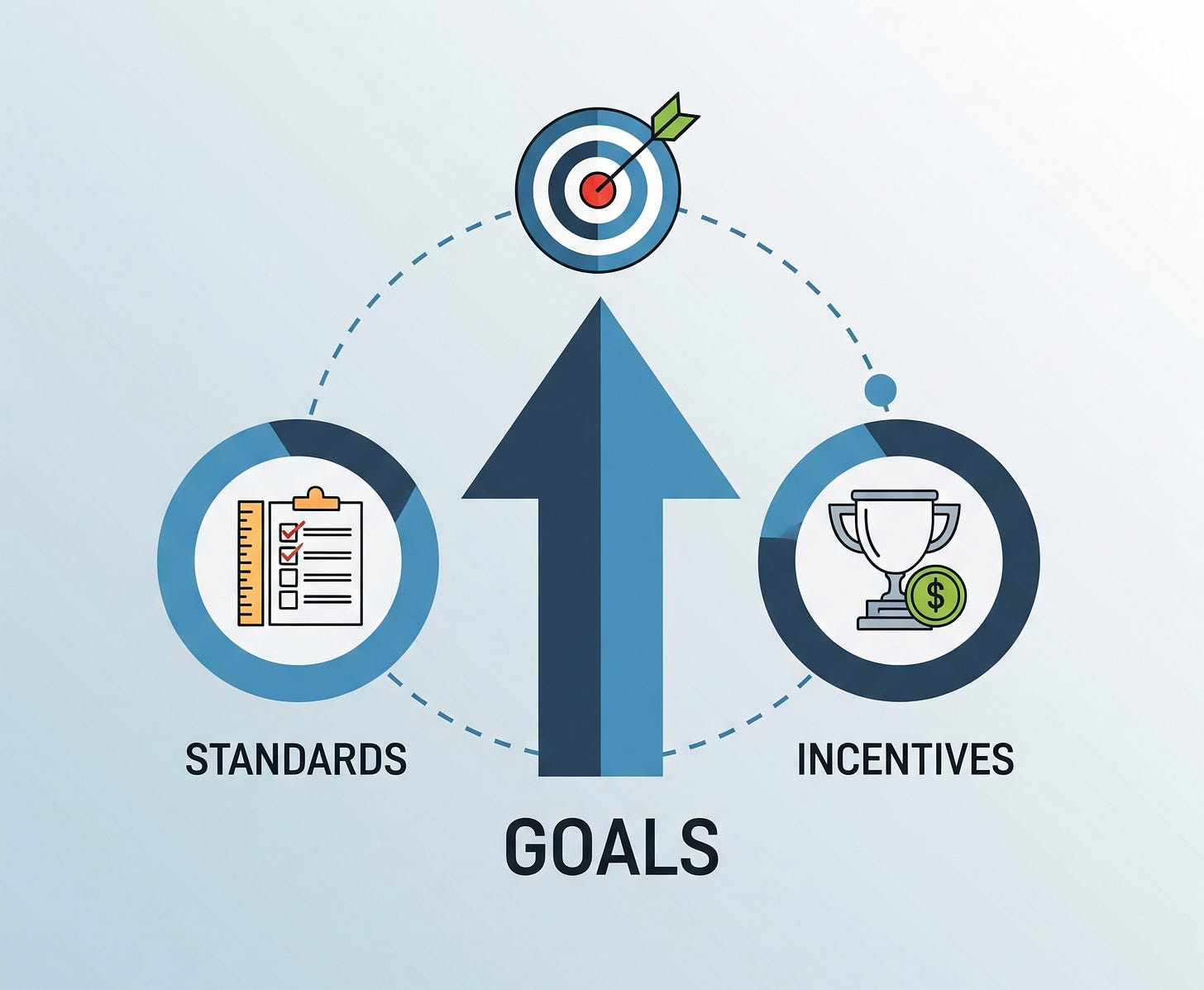Incentives - Understanding them in the context of Standards and Goals
How to Create Incentives for Goals and Standards
I've gotten a lot of questions about how to create incentives based on the standards and goals we talked about in my last post.
It's a great question, and the answer is rooted in the difference between the two concepts.
If you don't differentiate between a standard and a goal you might already face some challenges, this can get worse when it comes to incentives. Getting clear on this gives you a huge opportunity to drive true high performance.
Let's break down how to think about this.
Don't Incentivize Meeting the Standard
This is the most critical point to understand: do not create incentives for people who simply meet or fall below the standard.
Why?
Because the standard is the fundamental requirement for the job. It's the baseline of what's expected for someone to be a productive member of the team.
Taking from previous examples: If your sales reps don't hit the standard of 3-5 new clients per month, they're not fully performing in their role. If a branch manager doesn't hit the >10% profit standard, there's a problem.
Paying a big bonus for meeting the standard is like giving a baseball player a bonus for not striking out.
It's an incentive for what's already expected.
Instead of a bonus, the incentive for meeting the standard is simply keeping and progressing in the job.
If someone consistently falls below the standard, the conversation should not be about incentives; it should be about how to get them up to the required performance level or whether they are the right fit for the role.
Tie Incentives to Exceeding the Standard and Hitting Goals
This is where the magic happens. Once someone meets the standard, you can start to tie incentives to performance that goes above and beyond.
For example, let's look at the manager standard of >10% profit per quarter as good and use a simple incentive structure. The incentive shouldn't kick in at 3 clients. It should start at 5 and become progressively more lucrative the higher they go.
<10% Profit = bad, no incentive - need written plan
10-18% Profit = good, moderate incentive (hit’s your on target earning plans)
>18% Profits = awesome, bigger incentive + recognition
This structure rewards the behavior you want to see—people striving to exceed the standard.
The same principle applies to goals. Remember, goals should be ambitious and set by the individual, with the standard in mind.
“If the incentives are aligned they are designed to push people to set goals above the standard.”
Tying incentives to exceeding the standard and hitting ambitious goals creates a culture where people are constantly challenging themselves. It encourages a growth mindset, not a "just good enough" one.
Also - be honest, would you be disappointed if a manager set a 25% profit goal and only hit 19.5%?
I wouldn’t be disappointed, I’d do a happy dance with them since they are in the AWESOME range!
In my experience, differentiating between standards and goals then designing your incentive programs accordingly is a game-changer.
It creates clarity, drives performance, and shows your team you're serious about building a high-performing culture.
Lead well,
Joe



